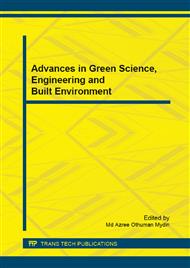p.28
p.32
p.36
p.40
p.44
p.48
p.52
p.56
p.60
Opportunity for New Entrepreneurial Ventures from Sustainable Public Open Space Adaptive Used Implementation (Case Study: Taman Fatahillah, Jakarta Old City)
Abstract:
Jakarta Old City has strong historical value as a genesis of the city today. Taman Fatahillah is one of historical open spaces in Old City which important part of urban area that influence the urban vitality as the public activities are usually performed on those space. The Revitalization of Taman Fatahillah has been implemented, however, a specific guidance to create sustainable adaptive use public open space had not been described. The aims of this research were to study of new entrepreneurial ventures are recognized of economic development from the sustainable adaptive use implementation for Taman Fatahillah public open space with the multiple linear regression methode. The variables of this research were economic-social, community participation, and government support, public open space quality, sustainable public open space. This research shows the finding of model study that partially, public open space quality was influenced by social-economic (Pvalue=0.00) and sustainable public open space was influenced by social-economic (Pvalue=0.019) and government support(Pvalue=0.00). Simultantly, quality and sustanability public open space were influenced by community participation, economic-social level and government support (Pvalue=0.00). This research has contribution to mobilize the appropriate people to create ventures’ people at large and than make sustainable public open space by social-economic aspect.
Info:
Periodical:
Pages:
44-47
Citation:
Online since:
March 2015
Authors:
Price:
Сopyright:
© 2015 Trans Tech Publications Ltd. All Rights Reserved
Share:
Citation:


